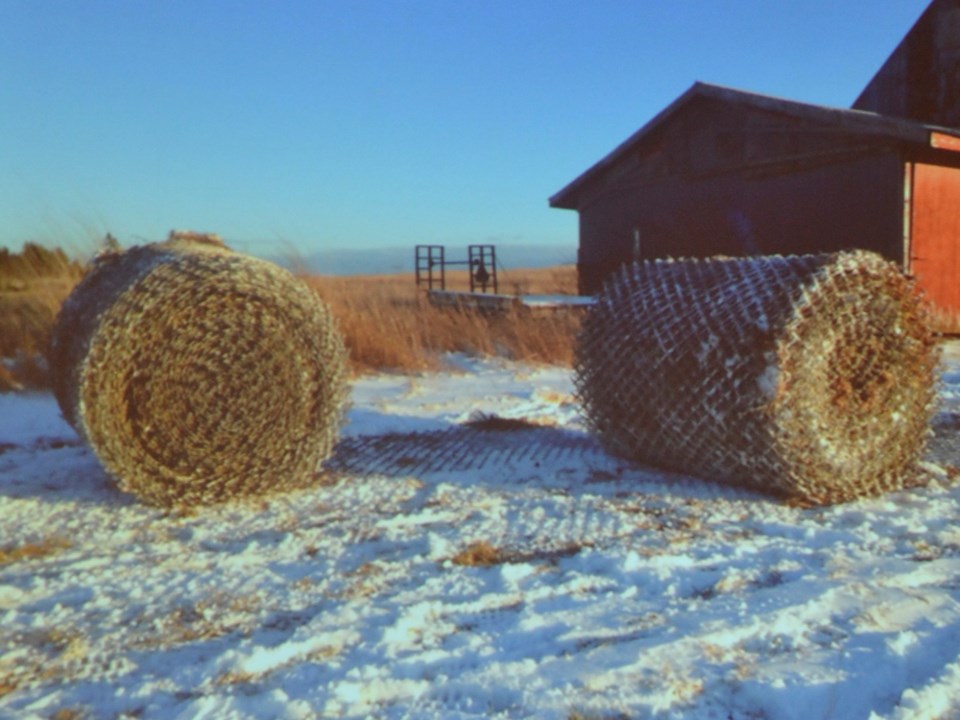Associate curator David Dyck and artist in residence Diana Chisholm have been familiar faces at recent events at the Estevan Art Gallery and Museum, but have only spoken a little bit about their own work.
That changed on Jan. 21, when the two hosted artist talks at the EAGM, discussing their backgrounds, motivations and work as artists over the past few years.
Chisholm described her artwork as exploring and portraying how boundaries change the space inside and outside of themselves. Her work took her from rural Nova Scotia to Saskatoon, testing the permeability of barriers, whether physical or metaphorical and the space they occupy.
Chisholm told guests that contemplating a situation going on at her original home in Nova Scotia where a highway is being twinned, inspired a significant amount of her work. The twinning resulted in property boundaries being realigned, and significant changes to the property on which she grew up.
Her works span a number of different mediums, including sculpture, casting and photography. In fitting with the theme of permeability there is often interplay between light and the transparency of the art she creates.
“I’ve always been the person who wants to come to the gallery and touch everything. When I’m working, I like to think the materials I’m working with are, maybe, a little less precious,” said Chisholm. “I like to make things where I can break down that boundary. I do more shopping for art materials at hardware stores…than at art supply stores.”
Materials she uses include wood, house wrap, metal, cinderblocks cast out of plaster and sawdust, wool, and chain-link fences cut and coiled to resemble bales of hay. It was this fence, which was used as a way to reflect the boundaries that are being broken down and rebuilt the place, where the highway twinning is taking place, on her family’s property.
Chisholm said there is a strong theme of deconstruction and reconstruction running through her work. This is reflected in a project where she built an outline of a planned community building in rural Newfoundland, made of her custom-made cinderblocks, leaving them exposed to the elements, demarcating the space where a building would go.
Before she came to Estevan, Chisholm’s grad exhibition was a focal point that tied heavily back to where she grew up. One piece entailed a panoramic shot of where she grew up, with a photographic fence line of her family’s property. The piece was set on transparent film, suspended on wires, and was made to recreate the steps she took, to take a shot of the original fence line of that property. Another piece was an outline of her grandparents’ house made in stakes that were incrementally placed closer together, in effect tightening the barrier such stakes represented. The third was a section of the gallery closed off by a chain-link fence accompanied by wooden pallets with lights behind them, with vapour barrier, all reflecting on the themes of transparency and permeability, and an indication of the significance of that which is inside barriers.
Dyck said his work didn’t have an overarching theme, but conceded he could come up with one: “I would say my work is about mechanical transfer and how to extend ourselves into the world through technology. I mean the huge set of tools available to you, as unacknowledged as language and culture.”
Dyck’s artwork is heavily inspired by his experience growing up in a household where he was encouraged to build things in the shop, and from his previous employment as a mechanical engineering technician.
“That’s someone whose role it is to get things ready for production and figure out how things can be manufactured,” said Dyck. “To design a process and get a repeatable product.”
Dyck said that such a machine-like dynamic often reasserts itself when he creates art. In many of his projects, Dyck devises methods to “short-circuit” drawing still life paintings, and functional art pieces, creating processes or machines to automatically do the artwork.
Dyck’s style has led him to create an assortment of outrageous projects: a loud hovering plinth; an automatic printing machine that would routinely run itself into a chaotic broken-down state in the process of creating prints; a bladeless chainsaw rigged to paint a canvas instead of cutting wood, that blasting ink through stencils onto it, to paint a lake scene and a bicycle that operates a set of drums with each turn of the pedals.
Dyck admits that he deliberately goes about his art with a sense of wackiness, saying: “(It’s like) that show Columbo, where he knows the answer in the end but acts like an idiot the whole time.”
He added, “I find that a very engaging way to work. If you can get people to smile, you can pull them in and show them maybe something else is going on.”




